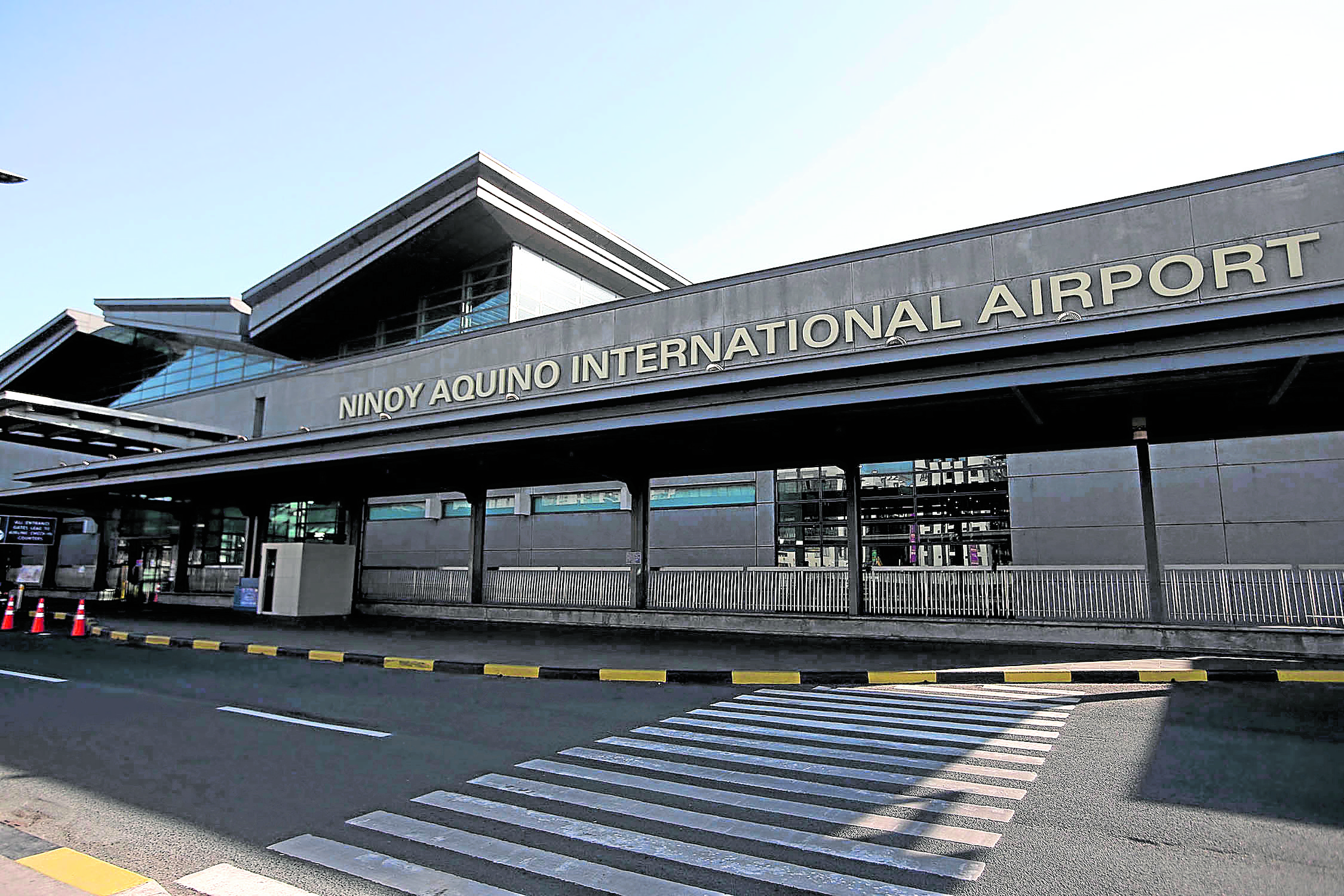UPS failure caused glitch at CAAP’s Air Traffic Management Center, says DOTr

(FILE) Ninoy Aquino International Airport Terminal 3 in Pasay City. INQUIRER PHOTO / RICHARD A. REYES
MANILA, Philippines — A failure in the uninterruptible power supply (UPS) equipment being used by the Civil Aviation Authority of the Philippines (CAAP) triggered the technical problems that affected flight operations at the Ninoy Aquino International Airport (Naia) and prevented aircraft on international routes from passing through Philippine airspace on New Year’s Day.
Transportation Secretary Jaime Bautista in a virtual press conference on Sunday night said the failed UPS equipment is linked to the power supply of the Communications, Navigation and Surveillance Systems for Air Traffic Management (CNS/ATM) of the CAAP’s Philippine Air Traffic Management Center.
“Meron tayong power, ang tawag natin dito UPS ano, uninterruptible power supply. Actually hindi naman problema ng power galing sa Meralco ‘no, there is really power, ang problema ay doon sa equipment that we’re using in CAAP,” Bautista said.
Bautista was seconded by CAAP Director General Capt. Manuel Tamayo, who said that both the commercial UPS and the backup UPS that are being used by the Air Traffic Management Center have failed.
According to Tamayo, when one of the UPS failed at 9:49 a.m. due to a cooling blower conking out, the other UPS also failed, leaving the CNS/ATM powerless.
Article continues after this advertisementA UPS is an equipment that acts as a battery for a system, in case of a power interruption.
Article continues after this advertisementTamayo explained that the after the UPS being used by the Air Traffic Management Center for its commercial power supply conked out, the UPS backup failed to go online.
“Meron itong dalawang UPS […] by design. Ang design nito, just in case we have a power failure or any of the UPS fails, aandar ‘yong isa. Ang nangyari, one of the UPS failed. No’ng nag-fail ‘yong UPS, ayaw na pumasok ‘yong commercial power or the standby power. So troubleshooting had to be done, ang initial na nakitang diperensya, one of the blowers of the UPS conked out, it gave out a warning tapos umugong, tapos nag-conk out,” he explained.
“So dapat nga walang problema, UPS nga. But for one reason or another, the other UPS did not come online, so troubleshooting had to be done,” he added.
When technicians tried to bypass the damaged UPS, Tamayo said that they placed an automatic voltage regulator that would limit the power coming into the system at 220 volts. The power supply issue was fixed, but it then issued a warning for overvoltage, as the system was receiving 380 volts.
Technicians then were forced to shut down the system to avoid damage to key components. However, some parts were already hit by the high voltage.
“So binaypass nila ‘tong nasirang UPS, and then reconnected the power supply to the equipment room, or the load, the A-traffic system. So when it was restored, ang nangyari do’n, biglang nagkaro’n ng warning — that was at 12:19 this lunch doon sa equipment center. There was an indication of overvoltage,” Tamayo said.
“So instead of getting 220 volts, ang pumapasok 380 volts. So immediately pinatay nila system to avoid damage further to the other equipment. Unfortunately, may nasira, may affected na system na nasira, na nakita nila. Ang pinaka-mabigat dito, what was affected was the VSAT, they call it the very small aperture terminal,” he added.
Tamayo explained further that the VSAT was key to communicating with arriving and departing planes, as these are satellite dishes used for communication, navigation, and computation of the data.
There are also two VSATs available in case of emergencies, and when the system was restored after using the backup VSAT.
“Dalawa ‘to eh, these VSAT are located outside the air traffic monitoring equipment system, ito ‘yong nakikita nating mga disk sa labas, parang platong malaki. These are the receivers from the satellites for communication, navigation, and all the necessary data that we require. So nakita nila ‘yong, dalawa ito, one is a standby, one is a main, what they did was to transfer one of the modules from the standby to the primary,” Tamayo noted.
“No’ng nilipat nila ‘yon, this occurred at about 5:45 this afternoon, we got the CNS/ATM back online,” he added.
However, the Ninoy Aquino International Airport (Naia) was able to operate again at around 4:00 p.m. on a limited basis because CAAP tapped the Tagaytay radar which is used by the agency in integration with other satellite-based communications and air traffic management systems.
By 7:45 p.m., Tamayo said they are 100 percent operational because the issues have been fixed.
“So meron na tayong communication as far as ATC is control, the aircraft is concerned, and some airports within the range of the Tagaytay radar which is about a hundred kilometers
“So at this point in time, na-restore na natin ‘yong ating CNS/ATM as of 7:45 we already had the radar displaced, and we were informed that it is 100 percent already, operational, however we still have to replace the equipment, the backup system, mga equipment na nasira because of this occurrence. So we expect operations to normalize at this point in time,” he added.
As of 4:00 p.m., the Manila International Airport Authority (MIAA) said at least 282 flights have been either delayed, cancelled, or diverted to other regional airports and ports abroad. This translates to over 56,000 passengers supposed to leave through or arrive at the Ninoy Aquino International Airport (Naia), the country’s primary international gateway.